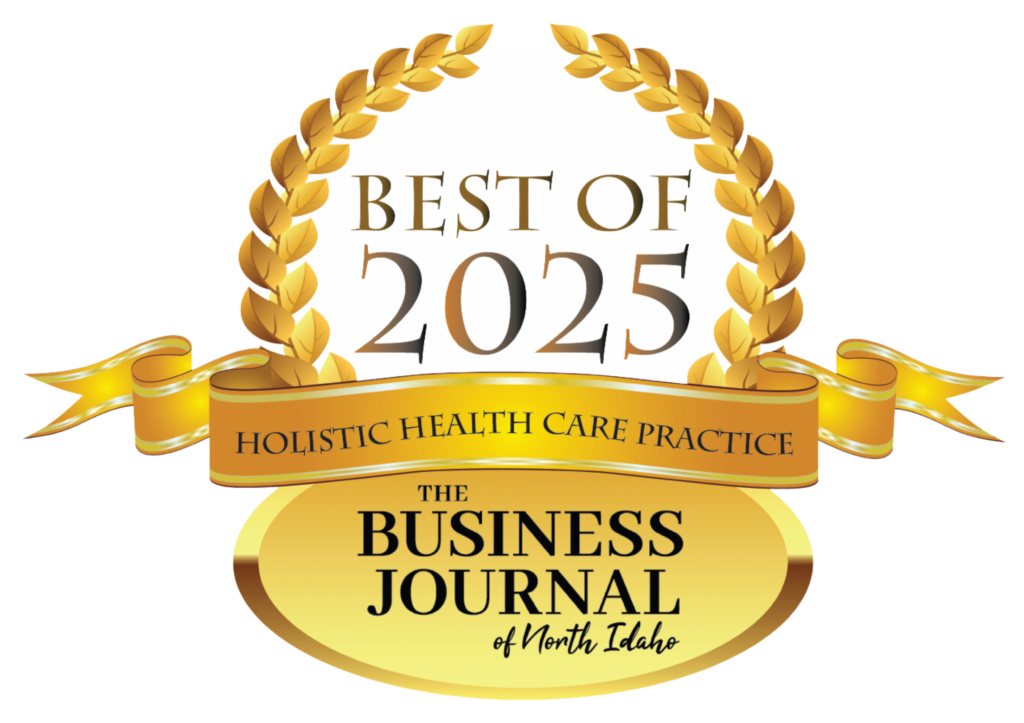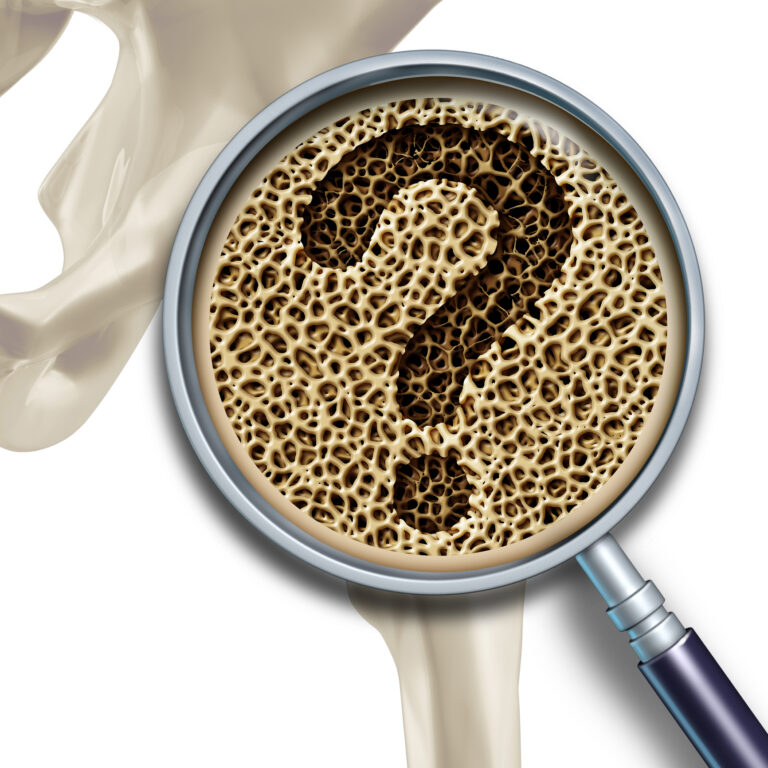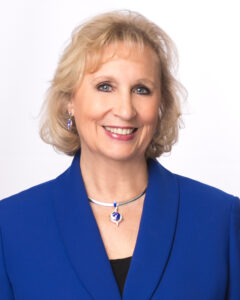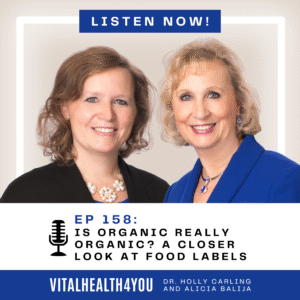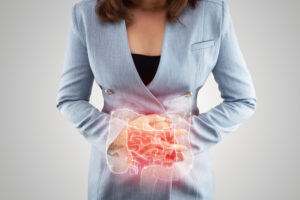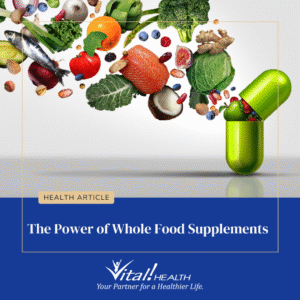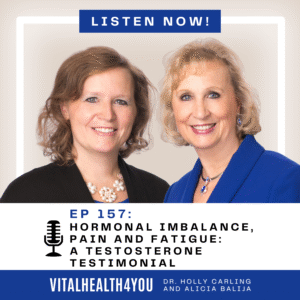What is Osteoporosis?
Osteoporosis isn’t a disease that causes weak bones, osteoporosis is the
name given to a diagnosis of weak bones. In other words, the weak bones
happened first, and then the diagnosis of osteoporosis followed.
They make it sound like osteoporosis strikes first, and then you get
weak bones. The cause and effect is all backwards. And that’s how drug
companies want people to think about diseases and symptoms: first you
“get” the disease, then you are “diagnosed” just in time to
take a new drug for the rest of your life.
“Osteoporosis is nothing more than a made-up name given to a pattern of symptoms that indicate you’ve let your bones get fragile…”
Bone loss in women coincides with diminution of estrogen and progesterone at the onset of menopause. But archeological evidence indicates that menopause does not necessarily initiate osteoporosis.
What do Bones Normally do?
This bone remodeling is a process where the adult skeleton undergoes a continuous turnover whereby old bone is resorbed by osteoclasts and new bone is formed by osteoblasts. A number of hormones, including thyroid, parathyroid, sex hormones, exert their influence on bone remodeling and interact with immune system proteins. From childhood through adolescence, skeletal mineral demands for bone formation are at their highest. A high protein, high sugar, fat and salt diet; and physical inactivity during these bone-forming years can reduce bone density and lay the foundation for osteoporosis in later years. When peak bone mass is reached at age 35, the larger the bone mass, the less risk of developing osteoporosis.
During the first years after menopause, the skeleton undergoes a period of more rapid mineral loss, and then tapers off to a slower, but constant loss. Osteoporosis may begin with no outward signs or physical sensations. Major changes in bone can occur before any pain is felt. What is more important to bone density is the health of the matrix of the bone.
What Causes It?
Osteoporosis is to a great degree a total dietary problem, not merely a calcium problem. There are many factors contribute to osteoporosis. Among those well known are; nutritional deficiencies caused by poor diet; heredity (especially prone are tall, thin, blue-eyed women); lack of exercise; smoking; alcohol; coffee; prescription drugs (especially cortisone, prednisone and their relatives); over-the-counter pain relievers; oral contraceptives; not enough sunlight; synthetic vitamin supplements, especially Vitamins A, C, E and D; aluminum or phosphate baking powders; anorexia nervosa; diabetes; sedentary lifestyle or periods of enforced bed-rest; long use of aluminum antacids such as, Mylanta, Maalox, Tums; possibly aluminum deodorants, aluminum cookware and cans used in canned foods and sodas and by other by poor lifestyle choices. The biggest issue is that it is a combination of the wrong foods consumed and the right foods not being included
What is Needed and Why?
Essential nutrients are needed on an ongoing basis to make bone. The following are the raw materials the body needs on a daily basis.
Vitamins: Vitamin A, Vitamin B, Vitamin C, Vitamin D, Vitamin E, Vitamin F (Essential Fatty Acids), Vitamin K. Minerals: Boron, Calcium, Chromium, Iodine, Natural Fluoride, Magnesium, Phosphorus, Zinc; Zinc, calcium and magnesium imbalance can also cause osteoporosis.
Other Factors to Consider:
Loss of Appropriate Stomach Enzymes: Insufficiency of hydrochloric acid, the primary digestive enzyme that breaks down all the minerals you consume, is perhaps the very first starting point of osteoporosis. If your body is unable to break down calcium, you could be eating the best diet ever, and taking the best supplements, exercise regularly and still succumb to bones dissolving away. Most people over the age of 40 (younger than that if stressed), need betaine hydrochloride (the plant equivalent of hydrochloric acid) enzymes to supplement their diet on a regular basis to ensure the body is able to digest calcium and the other minerals properly.
Protein: Protein given as a powder lacks fat-soluble co-factors that the body can use to build and maintain healthy bones. Studies done to compare bone density in meat eaters and vegetarians, found that vegetarians had greater bone densities than meat eaters, even though the quantity of bone calcium was lower in the vegetarians. Meat, like dairy products, has too much protein for the body to utilize efficiently. When we eat meat, an acid, high-phosphorus condition is created in the blood. Phosphorus is absorbed more easily than calcium, has a seesaw relationship with calcium and forces calcium down when it goes up, and can accelerate bone loss. The acid condition can dissolve calcium from the bones. If a high protein diet is consumed, it is impossible to maintain a positive calcium balance regardless of the amount of calcium taken in. Iron and zinc are also lost when a high protein diet is eaten. Some researchers believe zinc to be even more important than calcium in maintaining strong bones. Keep meat consumption to a low to moderate amount.
Caffeine: upsets the natural balance of calcium and phosphorus, and causes increased calcium to be excreted in the urine. Excessive caffeine contributes to bone breakdown and may be a factor in the development of osteoporosis.
Sugar: Refined carbohydrates such as sugar and white flour upsets the natural homeostasis of calcium and phosphorus in the blood. Sugars, including white sugar, syrups, honey and malt cause calcium to be lost.
Soft drinks: contain high levels of phosphorus (phosphoric acid used to make carbonation). When phosphorous levels in your blood rise, a message is sent to your brain, telling it that there is not enough calcium. What’s the result? The body draws calcium from the bones and teeth to balance the high levels of phosphorus. Phosphoric acid in soft drinks is a major cause of calcium deficiency in children and osteoporosis in adults.
Caffeine, sugar and alcohol are frequently put together because they have a similar effect on the bones. In addition to causing acidosis, which is caused by sugar and starch more than protein, these 3 cause extreme changes in blood sugar levels which in turn cause the release of adrenaline. At menopause it is especially important that your adrenal glands are not overworking because they will be called upon to produce estrogen, once your ovaries begin to produce less. This estrogen from the adrenal glands can then help to protect your bones. Both coffee and sugar cause an acidic reaction similar to protein, which leeches the calcium from your bones.
Alcohol: excess consumption of alcohol increases bone loss and the incidence of fractures.
Sodium: Too much salt interferes with calcium absorption and increases calcium loss.
Dairy Foods: Remember that milk is an animal protein and you may be excreting more calcium that you are taking in if you eat dairy products. You might be interested to learn that breast-fed babies absorb more calcium from their mother’s milk than from cows’ milk, despite the fact that cows’ milk contains four times the amount of calcium. What is crucial is how your body uses the calcium, and many people believe that our systems were not really designed to cope with cow’s milk.
Because dairy products are high in protein, salt, fat and phosphates, they may actually interfere with the retention of calcium stores and cause more calcium to be lost than saved. High levels of protein make an acid condition in the blood, tax the organs which must eliminate the excess, and trigger loss of calcium from the bones.
The kidneys have to excrete the excess and the wastes left over from metabolism, increasing the risks of developing kidney disease. The calcium excess from dairy products may form kidney stones.
In studies of the Chinese, it has been found that although the Chinese consume half the amount of calcium Americans do, osteoporosis is uncommon in China. Most Chinese people eat no dairy products, 1/3 the amount of fat and twice the complex carbohydrates as Americans. They eat 20% more calories, but Americans are 25% more overweight. The average Chinese diet consists of 7% protein from animals; Americans consume 70% protein from animals!
Tea: Tea contains caffeine, which will have an acidic effect on the body in the same way that coffee does. Fortunately, the effects are somewhat reduced with tea-drinking, so if you need your cup of tea, take care to drink it away from mealtimes. Tannin in tea binds to important minerals such as calcium and iron and prevents their absorption in the digestive tract. Leave a gap of at least one hour before or after eating if you are going to have a cup of regular black tea
Bran: Bran is a refined food that contains substances call ‘phytates’. These bind valuable minerals such as calcium and many others, including zinc and magnesium that are essential for bone and general health. In other words, they attract these minerals, a bit like a magnet, and they are excreted with the bran from the digestive tract.
Tobacco has been found to alter natural estrogen metabolism and accelerate bone loss. Smoking causes about 1% bone calcium loss per year occurring from less than a pack per day. Cancer, heart disease, and diabetes can all promote osteoporosis, and all have dietary causes.
Aluminum from antacids, cans and pollution also contributes to bone loss.
Hormones: We have to have the right proportion of estrogen to progesterone to prevent osteoporosis. Women about age 35 and into menopause start to go into accelerated estrogen dominance and will lose bone – about 1% per year. So if it were estrogen alone keeping the bones healthy, that wouldn’t happen. They’re losing progesterone and progesterone is actually more potent, but it’s always the right proportion of those 2 hormones. It’s not just the levels, it’s the proportion. Testosterone for women plays a big part in there as well. We have a little bit of testosterone that we need to give the bone density and strength as well as give the muscles tone and coordination.
Hormone replacement is often recommended for the prevention of
osteoporosis but is not an ideal substitute for the natural hormones produced
in properly nourished bodies. Estrogen is often prescribed to prevent
osteoporosis. But there are many problems with synthetic estrogen. It can cause breast cancer and can worsen
other cancers. It can cause endometriosis and certain blood-clotting
conditions. It can also increase the risk of death from heart disease.
Depo-provera appears to enhance bone loss and should be avoided in women with
high risk of osteoporosis.
What can we do about it?
Diet
WHAT TO EAT:
Boxed, canned, and frozen foods should be avoided when fresh food is available, as they are often deficient in nutrients and loaded with bone-robbing salt, fat or sugar.
Plant foods supplying calcium in adequate quantities include most seeds; greens like spinach, kale, mustard, cauliflower, broccoli, brussels sprouts and celery; carrots; green peas; green snap beans; oatmeal; cream of wheat; cashews; almonds; dried fruits; lentils; lima beans; soybeans and tofu.
Spirulina and seaweeds have been reported to help re-mineralize bones. Seaweeds can be soaked and added to salads or wrapped around sushi, or you can simply buy it powdered as a green drink.
Since every plant food contains protein, human needs are provided by most fresh food diets. Fresh cabbage has more protein per unit volume than whole milk. Rice, corn, fruit, wheat flour, dried beans and peas supply enough usable protein to safely maintain our health. By eating a variety of whole foods, all vitamin and mineral needs are met, without burdening the body with toxic excess that creates disease.
Exercise
Exercise is extremely important in the prevention of osteoporosis. In a nutshell, you need to ensure that you are doing some weight-bearing exercises (such as brisk walking, running, tennis, badminton, stair-climbing or aerobics). The more active we are, the thicker our bones grow. There is a connection between muscle strength and bone density. When we move our muscles, the pull of muscles on bones and the jolting of exercise, encourages the bones to absorb more calcium.
Sedentary work in middle age predisposes a person, male or female, to hip fractures in later life. Illness, surgery or injuries requiring immobilization for long periods will also affect bone density, especially in older people. Without regular exercise, bone density decreases and muscles become weak, leading to falls and fractures. A good conditioning program should be maintained throughout life, and especially if work requires one to be seated most of the time.
Moderation and enjoyment are the keys to a beneficial exercise program. The amount of exercise will vary with each person depending on the overall health. Walking is good for a start, then aerobics, cycling, and purposeful labor are good weight-bearing activities. Swimming is not a good weight-bearing exercise because water reduces the effect of gravity and there is less weight demand put on muscles and bones. This kind of exercise is good for advanced osteoporosis. Stretching is also good for muscles and bones and helps prevent humpback.
What Tests are Available
DexaTest: The DexaTest is what’s mostly used now to measure bone density. The test measures the hip, the L4 Vertebra, the wrist and it measures what we call cortical and trabecular bone. Corticol bone is a better gauge because trabecular bone has a lot of space in it. It’s more like a sponge, cortical bone is more dense.
Bone density determinations through absorptiometry or X-ray are highly subject to error.
There are a number of Other Tests available that are extremely useful and are well worth considering, especially the Osteoporosis Bone Turnover Test (Urine) (GDSL). This simple urine test, (which is collected at home), measures how much your bone is turning over. i.e.. The rate at which you might be loosing bone.
Drugs to Treat it
Prescription Drugs That Contribute: Osteoporosis can be a doctor-induced disease. Several drugs are now known to be implicated in osteoporosis: Corticosteroids are famous for this (cortisone, predisone and all related steroids), thyroid hormone supplements such as thyroxine, isoniazid for tuberculosis, antibiotics especially tetracycline and its derivatives, tranquilizers and psychotropic drugs such as anti-depressants. This list will most likely increase as more cases of osteoporosis appear and more research is done.
Drugs Prescribed to “Treat” Osteoporosis. These include (see additional handout regarding the individual drugs mentioned here.Fosamax, Actonel, Boniva, Evista, Miacalcin, Forteo, Didronel, Skelid.
Summary
Only a rich, wholesome and varied diet can supply the many nutrients needed for the complex process that maintains the integrity of our bones. Vegetables (especially green leafy veggies), nuts, meat and old fashioned bone broths supply calcium..14 One quart of whole milk, or six ounces of whole natural cheese supply the optimum 1200 mg of calcium. Individuals with a poor tolerance to milk products must take extra care to obtain sufficient dietary calcium. Fish, chicken or beef broth, prepared with a little vinegar to pull calcium from the bones, are excellent sources, and have supplied easily assimilated calcium to pre-industrialized peoples throughout the globe. Leafy green vegetables and grains, nuts and seeds are also good sources if properly prepared. Vegetables and grains should be consumed with animal fats like butter or eggs; and nuts, legumes and grains should be soaked, sprouted or sour leavened to neutralize phytic acid, a substance that can block calcium absorption.
If we choose to eat a balanced diet, we can prevent, and in many instances reverse osteoporosis. Only a rich, wholesome and varied diet can supply the many nutrients needed for the complex process that maintains the integrity of our bones.
The Bottom Line:
Bone Density + Bone Quality = Bone Strength
Recommended Osteoporosis Protocol: Betaine Hydrochloride 6/day (digestive support); Calcium Lactate 9/day; Udo’s Oil 3 tablespoons/day (essential fatty acids); BioDent 6/day (harden bones); Min Tran 6/day (balanced mineral blend).
© 2005 Holly A. Carling, O.M.D., L.Ac., Ph.D.

